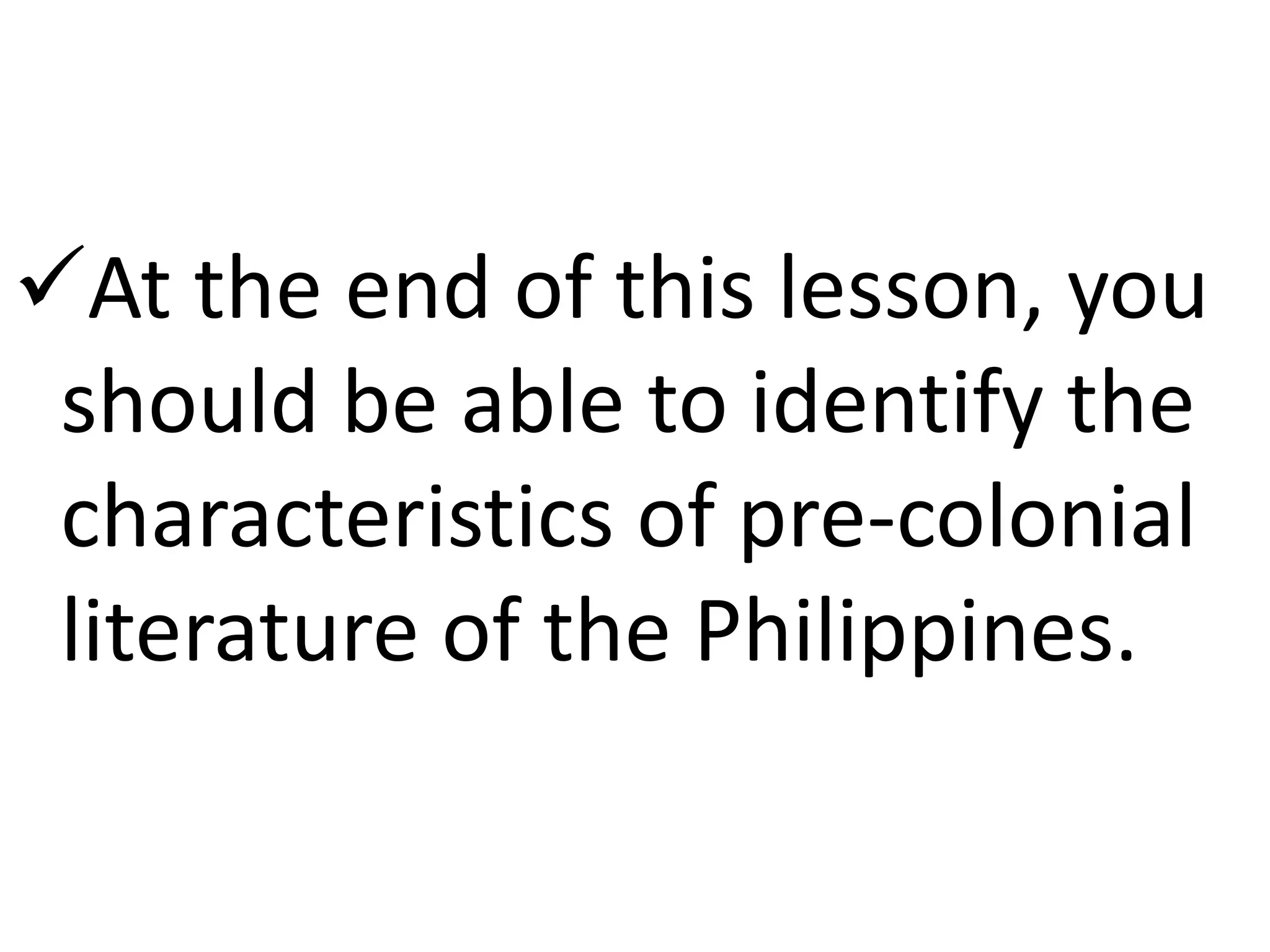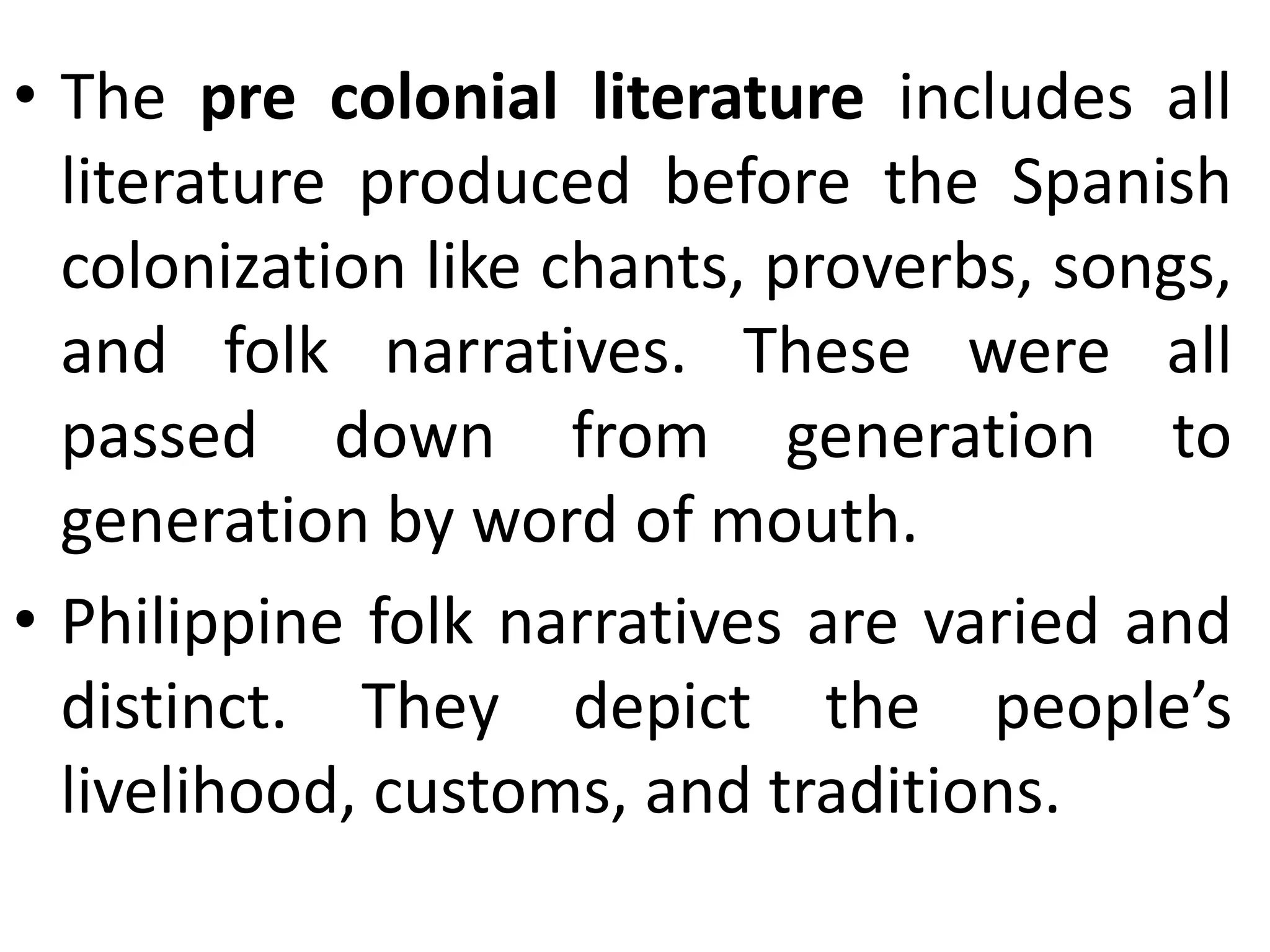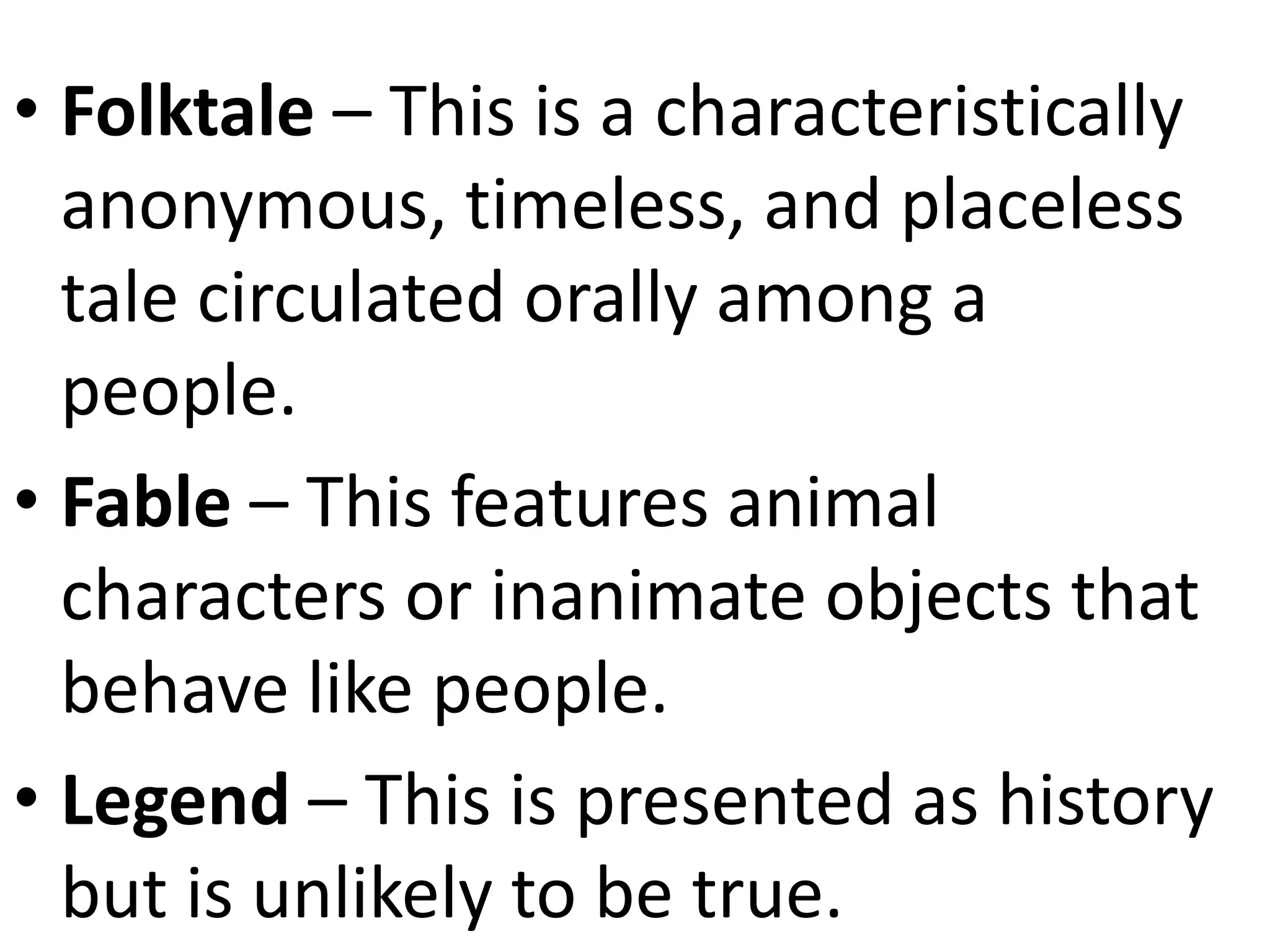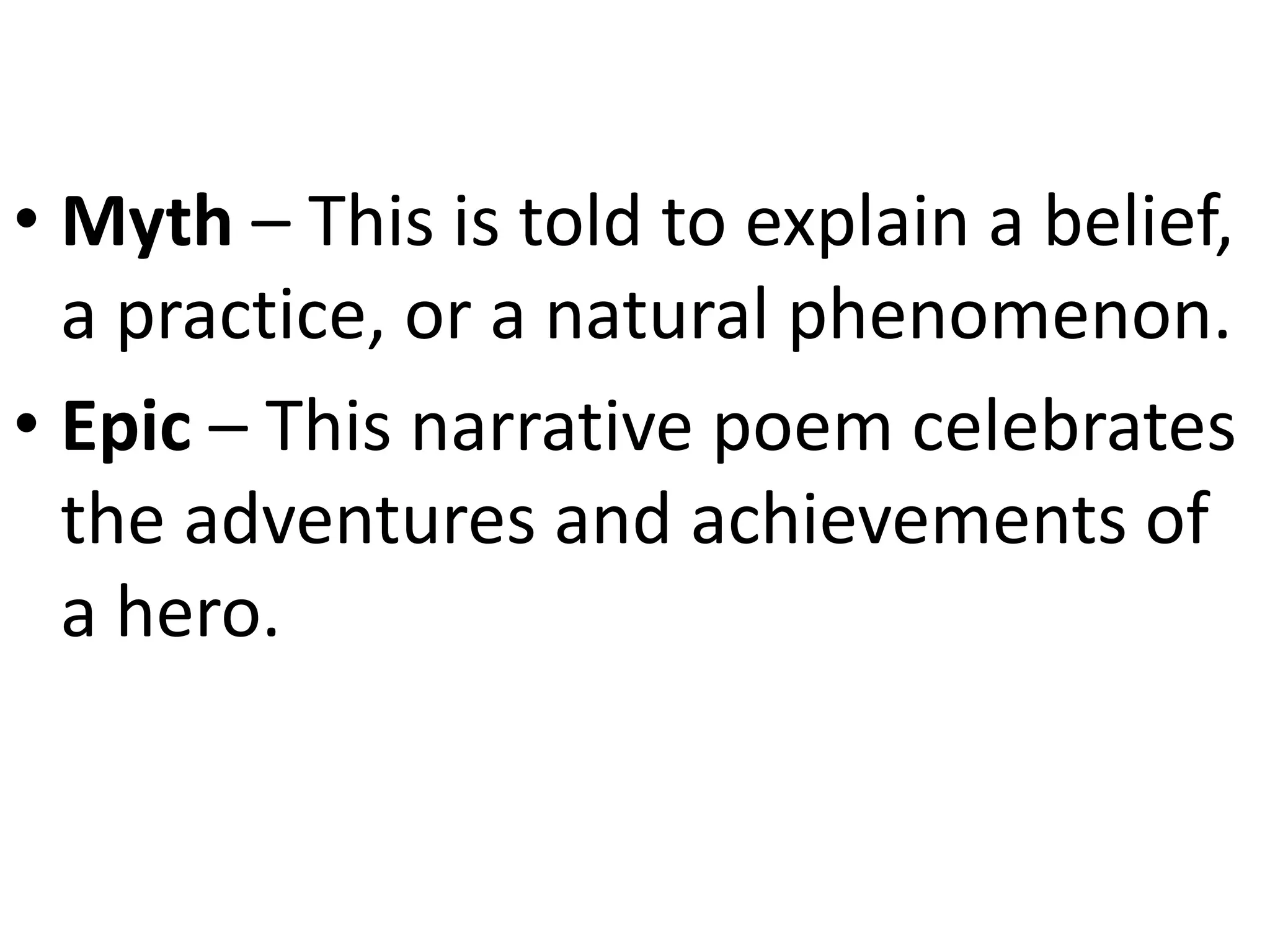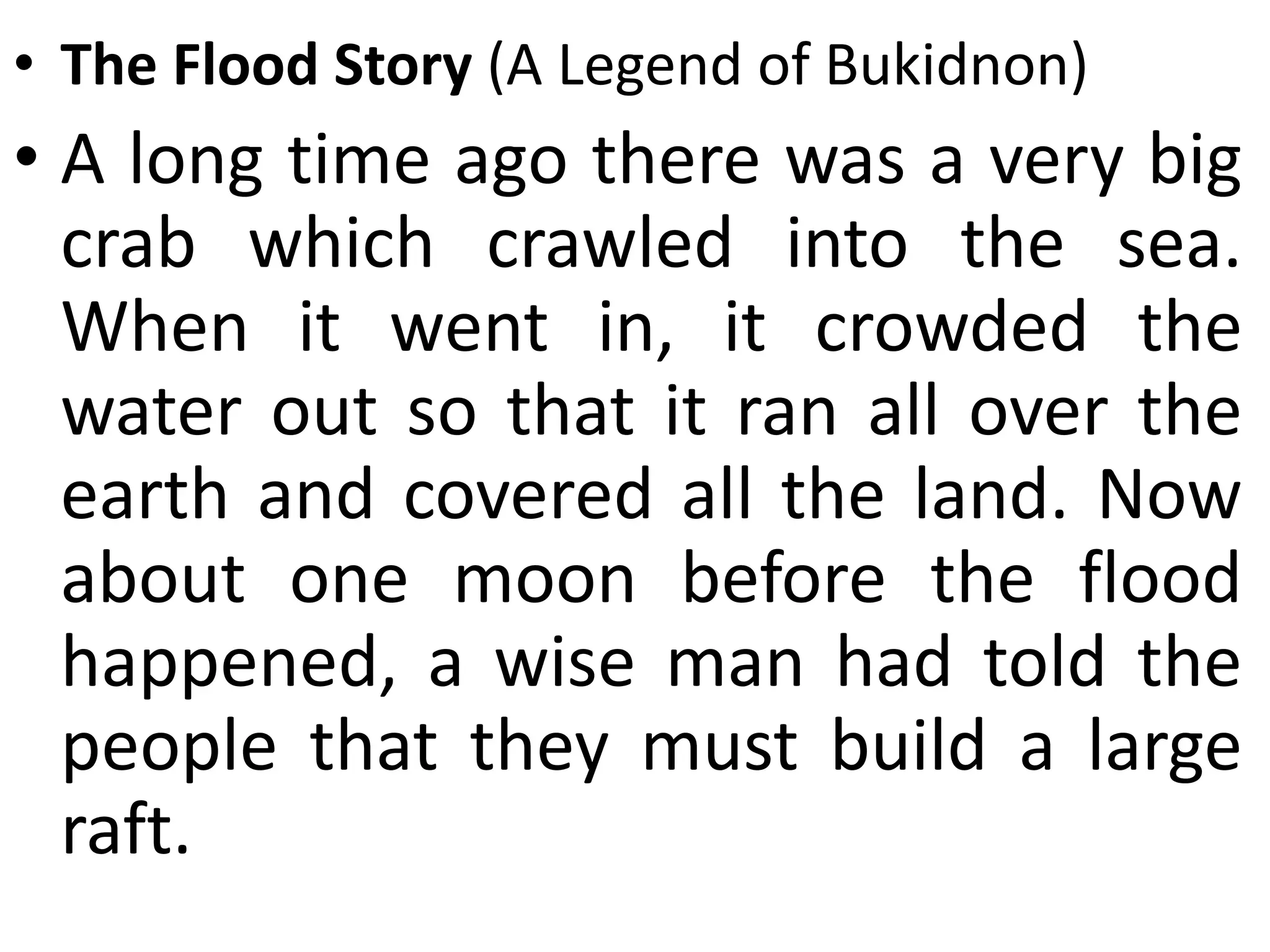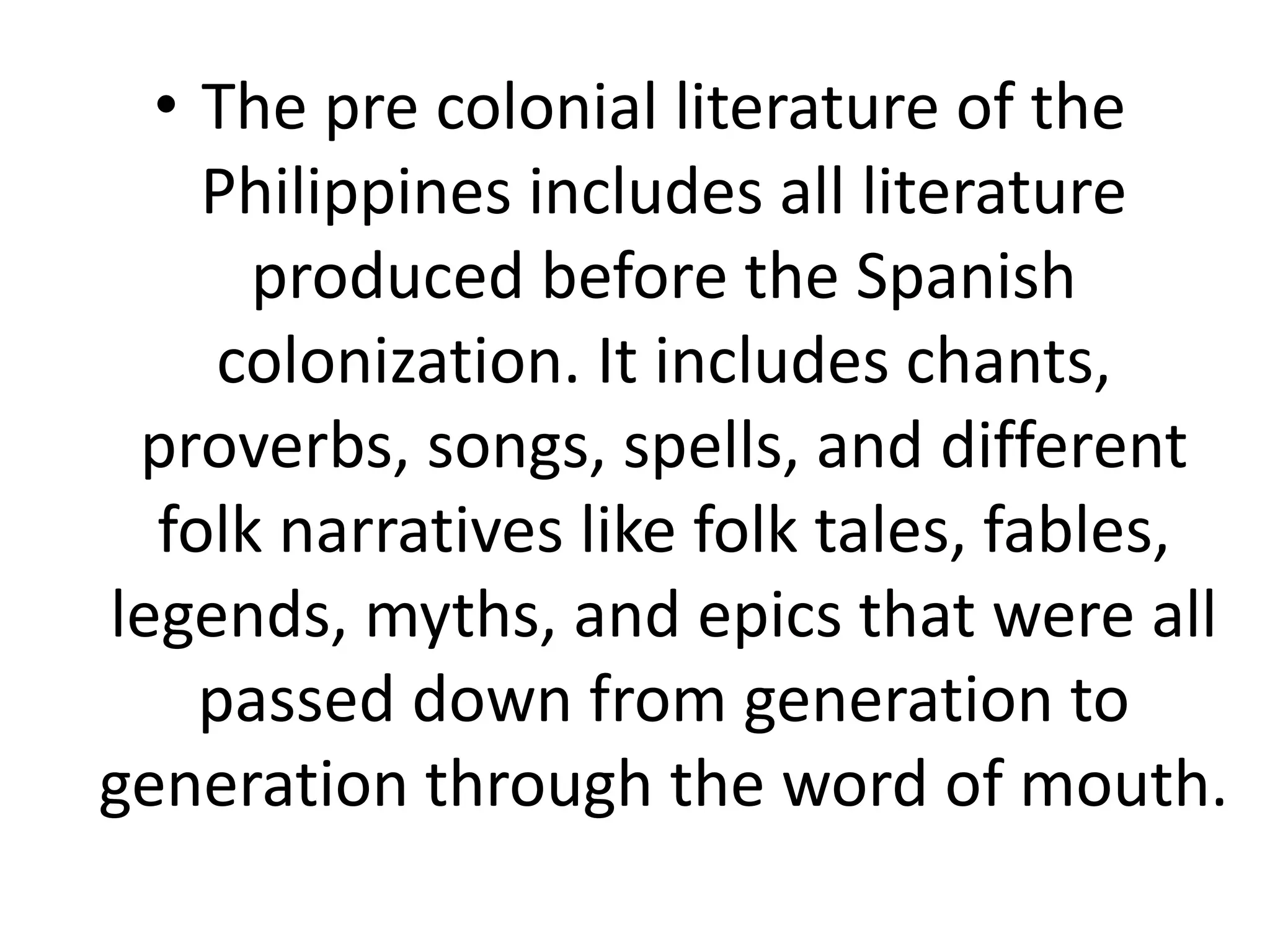This document discusses characteristics of pre-colonial Philippine literature such as chants, proverbs, songs, and folk narratives that were passed down orally before Spanish colonization. It provides examples of different folk literary genres that depict Philippine culture, including folktales about trickster character Juan and animals, fables featuring cunning monkeys, legends explaining natural phenomena, and creation myths about how people came to be.

